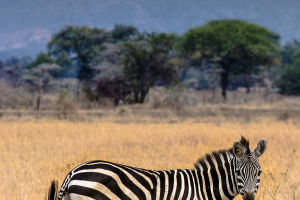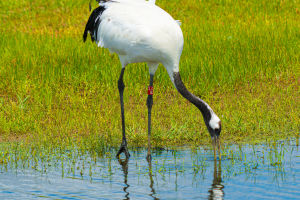Spotlight On Giraffes
The giraffe is an iconic animal known for its extraordinary height, but there is so much more to this unique creature. They have a distinctive appearance with their lovely soft expressions and fur that is covered in spots of different shapes and sizes.
However, there is much more to them than just their physical features.
Giraffes are native to Africa and can be found in a variety of habitats, from tropical regions to semi-deserts with few trees. As herbivores, they mainly feed on leaves and twigs. With a lifespan of about 27 years in the wild and over 29 years in zoos, giraffes are remarkable creatures that have a significant role in the ecosystem.
The giraffe's long neck is one of its most striking features, with only seven vertebrae. However, their vertebrae are longer and connected with thick muscles, allowing them to move their necks in many directions.
Giraffes' height requires them to have a higher blood pressure than normal animals, as only this way can the heart transport blood to the "far away" brain.
The spots on a giraffe's skin can indicate their age, especially in males. The darker the mark, the older it is. The color of the fur also indicates the sexual maturity of the male. Moreover, no two giraffes have the same spotting pattern.
Like human fingerprints, these are very unique, and the shape of the spots appears to be passed from mother to son, although the reason is unclear. These spots can be used for camouflage, regulating body temperature, and recognizing each other.
Giraffes' tongues are incredibly long, flexible, and strong. They can reach up to 45 cm in length and help them pick leaves and twigs, and their strength prevents leaves and twigs from piercing their mouths. Their feet have two hooves and two pseudo-hooves that help them walk and run, and they can kick very hard, injuring a lion or other predator.
Giraffes are social animals, usually living in small groups led by a dominant male. They can communicate through calls and gestures to express their emotions and intentions. They engage in interesting behaviors such as "neck wrestling," which is a common form of competition between two males for power and status.
Giraffes play a crucial ecological role in nature. They help control tree growth by picking leaves and twigs, and their droppings are rich in nutrients that fertilize the soil. However, their numbers are declining due to factors such as habitat destruction, poaching, and illegal trade. Therefore, it is important to protect these unique animals.
Many organizations and institutions are working to promote actions to protect giraffes' habitats and living spaces. These actions include establishing protected areas, developing conservation programs, and creating awareness campaigns. We must continue to work towards ensuring the survival of these incredible animals.
The giraffe is an exceptional animal, not only for its height and spots but also for its unique characteristics and vital role in the ecosystem. As we strive to protect their habitats and prevent their numbers from dwindling, let us appreciate these remarkable creatures for all they are and all they contribute to our world.


